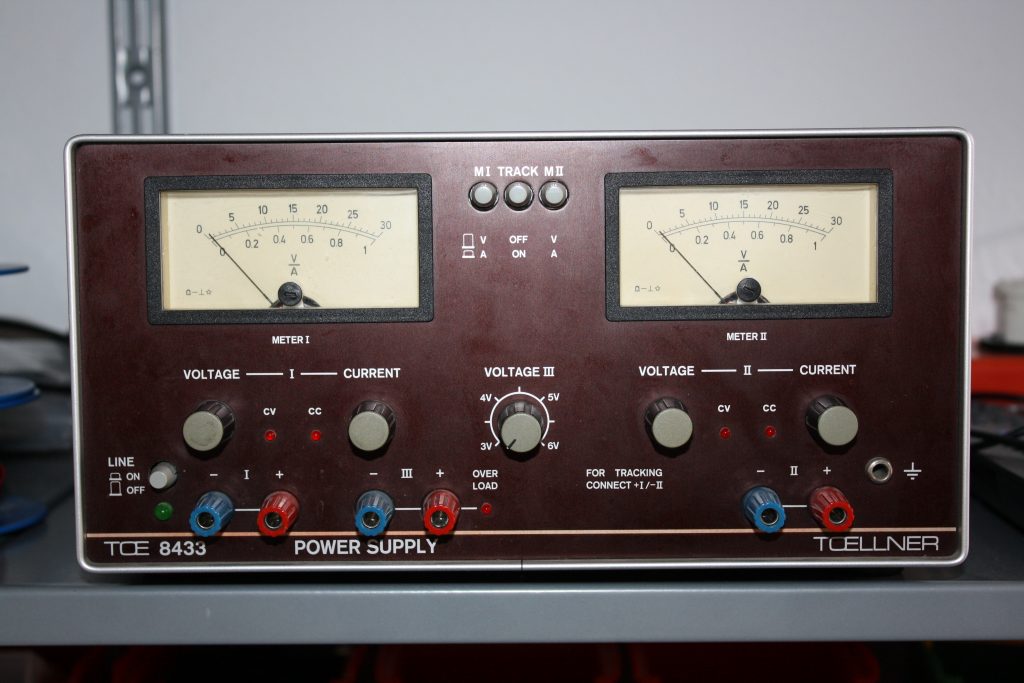For quite some time I wanted a “real” bench power supply. The problem is, the good ones are expensive and the cheap Chinese ones are usually crap. So I bought an old Toellner TOE8433 on Ebay.

According to the seller the left instrument was broken and always on full tilt, the cause being “probably just being a bad solder joint”. That wasn’t it.
The PSU has three outputs: A 3-6V output and two identical 0-30V 0-1A outputs, one of which was broken and put out about 44V, no matter what. The instrument itself, on the other hand, was completely fine. There just wasn’t any scale left.
A first try to repair it without schematics didn’t work out so good. I found a few broken components but I didn’t find the cause of the fault. So I went hunting for schematics on the net, without success. There was one guy selling the schematic I needed but he wanted 10 € for the PDF. That couldn’t be any more than a last resort. So I tried contacting Toellner themselves. I knew that was a long shot, but since I was reluctant to give somebody 10 € for a PDF, I had to give it a try.
I wrote a mail explaining that I bought an out of production PSU on the net, that I was on a tight budget and asking nicely for the schematics. I didn’t really expect an answer at all, but two hours later I had a mail in my inbox, reading something along the lines of “Dear Sir, enclosed you’ll find the files from the years 1984 and 1992. Please recommend us. Best regards…”. Attached were complete schematics, BOM and a description of how the circuit worked (which I didn’t entirely understand, even after reading it ten times – more than three transistors interacting with each other still make my brain hurt).
With the schematic, repairing the thing was a piece of cake. I soon found out that an internal supply voltage was missing and found the fault in the generation of that voltage, so after fixing that, everything worked perfectly again.
The only question remaining is, how did the previous owners manage to break the thing in the first place? These devices are widely in use in educational workshops, so they can take quite a bit of abuse. Shorted outputs and even hooking up voltages shouldn’t be able to damage them. Hooking up mains could do the trick, though, I suppose.
So I want to thank Toellner for supplying me with the schematics, and no, I won’t share them. They have been nice to me and I don’t want to piss them off by publishing their stuff on the net. I value open source a lot, but these files aren’t open source or public domain, and I have to respect that. If you want them, go and ask for yourself.
